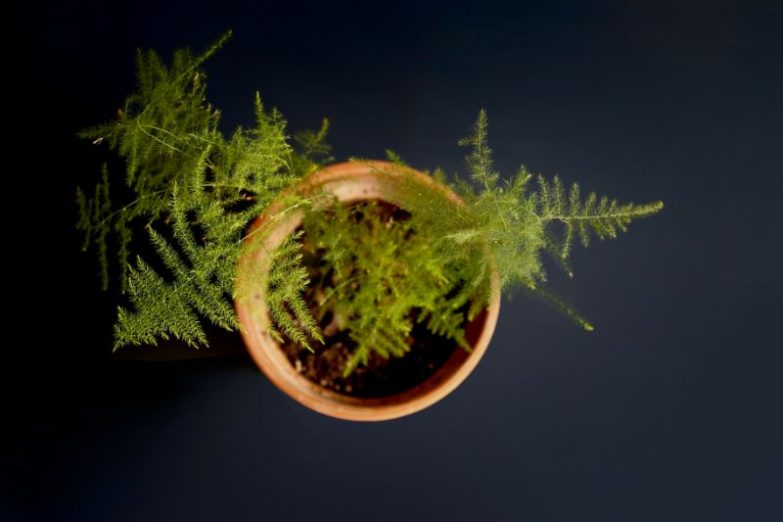With delicately fuzzy foliage that extends in dense plumes, Asparagus Ferns are interesting and beautiful houseplants that have had a recent resurgence in popularity. Whilst generally trouble-free, Asparagus Ferns do have a few common problems. If your Asparagus Fern is turning yellow, this article will explain why it’s happening and help you to fix your plant.
An Asparagus Fern turning yellow is most commonly due to overwatering or insufficient lighting. Other causes include fertilizer problems, pests, excessive light, underwatering, and acclimation. Correctly identifying the problem is crucial before trying to fix your plant.
Causes Of An Asparagus Fern Turning Yellow
There are a number of plants within the Asparagus genus that are commonly known as Asparagus Ferns. They all have slightly different appearances, but broadly similar care requirements. Here are some of the species that are commonly referred to as Asparagus Ferns;
- Asparagus setaceus
- Asparagus densiflorus
- Asparagus retrofractus
- Asparagus plumosa
This article will cover the causes of yellowing foliage of all of the above species.
A close relative of edible asparagus, and not actually a fern, the Asparagus Fern makes a surprisingly resilient houseplant, despite its delicate appearance. If the look and health of your plant have been marred by yellow foliage, don’t despair. Let’s look at each cause of yellow leaves on Asparagus Ferns to help you get your plant back to health.
Overwatering
Overwatering is one of the most common causes of an Asparagus Fern turning yellow. This happens due to the damage that overwatering does to the roots of your plant, resulting in the foliage suffering.
If you are watering your plant very frequently, or if it is planted in poorly draining soil or a pot that has few or no drainage holes, then problems related to overwatering are likely to happen before long. Issues can also arise when the water requirements of the plant are reduced, such as during the winter, or in low light.
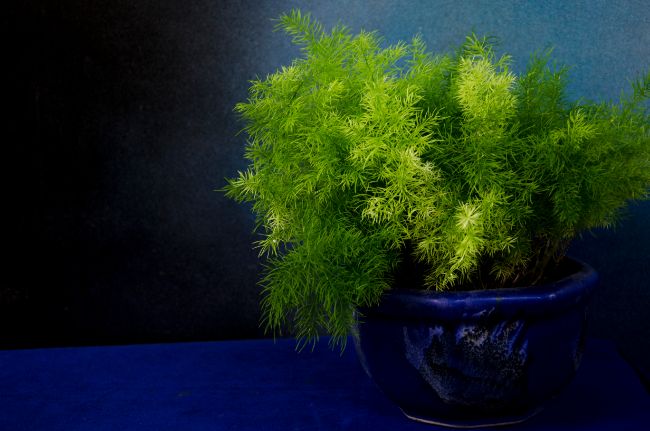
Why Does Overwatering Cause Asparagus Ferns To Turn Yellow?
Overwatering causes yellow leaves on Asparagus Ferns because the roots cannot meet the needs of the plant. Roots need oxygen to survive and function and they normally rely on air moving through the air spaces of the soil to supply this need. If the soil is constantly soggy, the roots do not have access to the oxygen they need.
As a result, the roots cannot absorb the water and nutrients that the plant needs. This results in the plant showing signs of stress, which usually involves generalized yellowing of the foliage, often starting with the lower foliage first.
How To Know If My Asparagus Fern Is Turning Yellow Due To Overwatering?
If you start to see your Asparagus Fern turning yellow, check the following and fix each issue that needs addressing;
- Check the soil – Asparagus Ferns need well-draining soil that retains a little moisture after watering. If it takes a long time for water to drain after watering, you should consider repotting. A mix of 60% peat, 30% perlite and 10% compost is a good mix for Asparagus Ferns.
- Check The Pot – The pot shouldn’t be excessively large for the plant, as this will mean the soil takes a long time to dry out between watering. For similar reasons, it should have adequate drainage holes. Consider the pot material too. Terracotta is porous and will typically allow the soil to dry quicker compared to a plastic or ceramic pot.
- Care Conditions – Asparagus Ferns need bright, indirect light and moderate humidity and temperatures to grow strongly. An Asparagus Fern that is placed in low light will grow very slowly and use very little water. This means the soil will stay wet for much longer than it should and your plant is much more likely to turn yellow due to overwatering.
How To Fix My Asparagus Fern Turning Yellow Due To Overwatering?
If you detect overwatering at an early stage, and the foliage is just starting to turn yellow, the plant can be fixed easily. Reduce watering, let the plant dry out more and review your plant to ensure it is potted appropriately and its care needs are being met. Read my article on fixing an overwatered plant for more info.
If things have got worse, and root rot has set in, then it will be more difficult to save your plant. Root rot presents with brown or black, mushy roots that are very fragile, and there may be an offensive odor from the soil.
You will need to repot your plant immediately, removing all affected roots with sterile pruners. Read my article on identifying, treating, and preventing root rot for more information.
Underwatering
Although they look delicate, Asparagus Ferns are normally quite drought resistant. They have tuberous roots that store water when it is available, allowing them to use this in times of drought.
Nevertheless, prolonged lack of water or inconsistent watering can lead to your Asparagus Fern turning yellow. This will typically affect the leaf tips and peripheral foliage first but will extend to affect more of the plant with prolonged lack of water.
The foliage can turn yellow or brown in response to drought and will feel dry and crispy if lack of water is the issue.
This should be a much easier issue to identify, as the soil will be very dry to touch. You may also be aware of how long it has been since you last watered your plant.
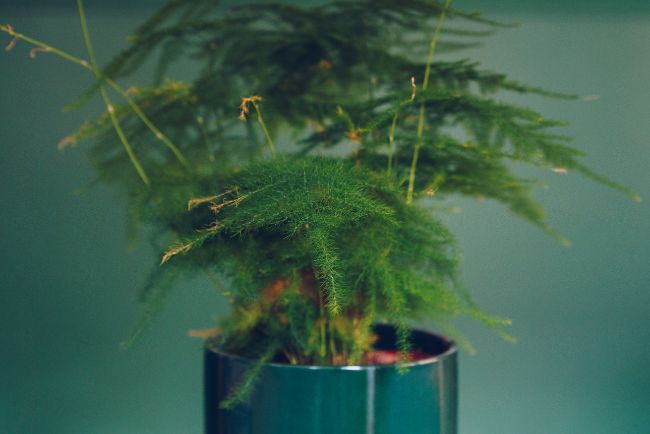
How To Fix An Asparagus Fern Turning Yellow Due To Underwatering
Foliage that turns yellow due to underwatering typically won’t recover once you resume normal watering. However, new foliage will normally grow readily to replace it. You can then prune off the affected foliage to restore the cosmetic appeal of your Asparagus Fern.
Bear in mind that there are a few factors that can increase the likelihood of underwatering resulting in your Asparagus Fern turning yellow;
- Excessively high temperatures causing the soil to dry out rapidly.
- Very low humidity levels.
- If your Asparagus Fern is potbound, it will use up all the water it is given very quickly.
Low Light
Low light is one of the most common causes of an Asparagus Fern turning yellow. This problem typically develops slowly, as the plant languishes in lighting that is insufficient to support its needs. The plant will typically become stretched (etiolation) and sparse, and yellowing will be generalized
It is very easy to place your Asparagus Fern in a location that doesn’t provide enough light for its needs. Many houseplants do best in bright, indirect light, but this is typically more intense lighting than most people think.
A quick way to check if your Asparagus Fern is receiving sufficient lighting is to check what kind of shadow the light casts. Hold your hand close to the wall or floor near your plant and look at the shadow of your hand. If you see a shadow that is fairly clear, with a fuzzy outline, then this is perfect. If you see no shadow or just a very faint, indistinct shadow, then the lighting is insufficient.
Alternatively, you can download a light meter App for your smartphone that will use your camera to provide an estimate of the lighting. Bright indirect light is approximately 800 and 2000 foot candles.
How To Fix An Asparagus Fern Turning Yellow Due To Low Light
Move your plant to a location that provides sufficient light and it should start to recover. Try to find a location in your home that provides appropriate lighting on average.
Bear in mind that lighting changes depending on the time of day, season, and even depending on the weather. You may have to move your plant to a brighter spot in winter or to a more shady spot in summer.
Excessive Light
At the other end of the spectrum, excessive lighting can cause problems with the foliage of your Asparagus Fern, including scorching the leaves and turning them yellow or brown.
Asparagus Ferns generally can’t tolerate more than 1-2 hours of direct sunlight per day, so keep yours in indirect sunlight. A north or east-facing window will generally work well, although you may wish to move your plant back from any window that gets much direct sunlight, particularly in the warmer months of the year.
Amend the lighting and wait for some new growth to develop before pruning off the affected foliage.
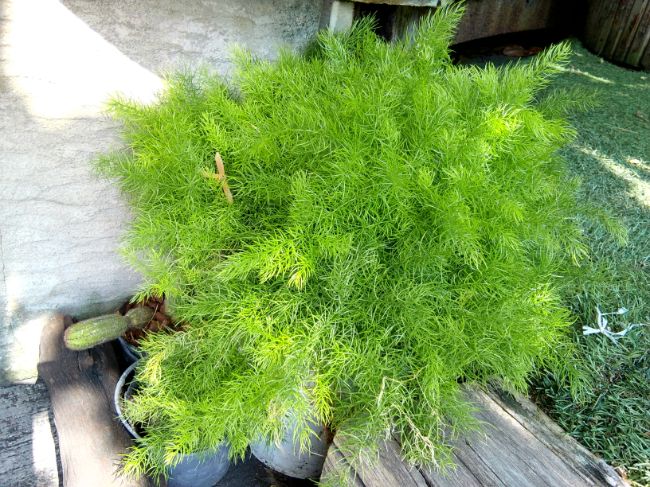
Fertilizer Problems
Asparagus Ferns do best when they are given a steady supply of nutrients, but take care to avoid overfertilizing. I like to use a balanced, water-soluble fertilizer every 3-4 weeks while the plant is actively growing. I typically dilute the fertilizer to half the strength recommended for outdoor plants. This normally prevents any issues with overfertilizing.
An Asparagus Fern turning yellow due to lack of fertilizer will generally look like it is languishing, and will turn progressively paler, with generalized yellowing of the leaves.
An overfertilized Asparagus Fern will develop brown tips, and you may see evidence of fertilizer salt build up on top of the soil.
How To Fix An Asparagus Fern Turning Yellow Due To Fertilizer Problems
If you have not fertilized your Asparagus Fern in a long time, start a regular routine as outlined above. Read my guide to fertilizing houseplants to learn more.
If you think overfertilizing could be the cause of yellowing, stop fertilizing and flush the soil thoroughly. This involves running water through the soil for several minutes to dissolve the excess fertilizer salts and wash them out of the soil. Avoid fertilizing your Asparagus Fern for a few months, and then restart a more conservative regime.
Pests
Spider mites, mealybugs, and scale are the most common pests to affect Asparagus Ferns. They can all cause yellowing of the foliage if there is a bad infestation.
All these pests are sap suckers that weaken the plant by piercing the foliage and stealing valuable water and resources from the growing plant. The resulting stress will normally cause patchy yellowing, that can become more generalized as the infestation gets worse.
How To Fix An Asparagus Fern Turning Yellow Due To Pests
Check your Asparagus Fern for pests on a regular basis. Bear in mind that spider mites are very tiny, so you will need to inspect the plant closely for the bugs or their webs. Refer to my article on treating common houseplant pests for more info on treatment.
To prevent pests on your Asparagus Fern, quarantine any new plant that you bring into your home for at least 7-10 days. This gives you time to observe your new plant for signs of any bugs and helps to protect your existing houseplants.
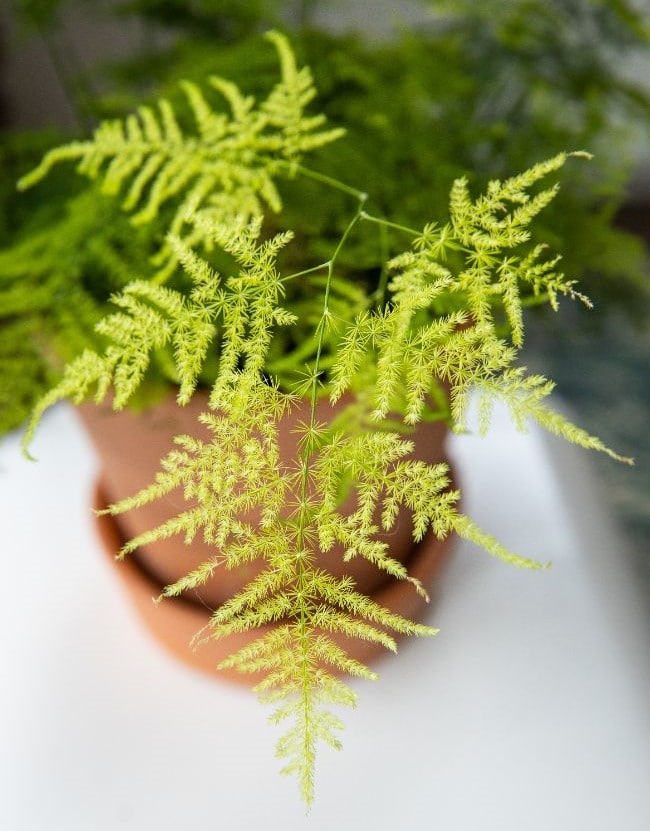
Acclimation
Most houseplants, including Asparagus Ferns are grown in near-perfect conditions in the plant nursery. It can be difficult to replicate these conditions in your home, so your Asparagus Fern will take some time to adjust. This can involve yellowing or browning of some of the foliage in the first few weeks after you bring your new plant home.
Don’t worry too much about this. As long as you are providing a fairly good environment for your new plant, things will stabilize before long and new, healthy foliage will develop. You can then prune off the affected foliage and enjoy your plant.
Last Word
If your Asparagus Fern is turning yellow, then think about watering and lighting issues first. Take a methodical approach to assessing your plant, as if you look closely enough, the cause will become apparent in most cases.
Caring for houseplants is a constant journey of learning, and a few imperfections or yellow leaves shouldn’t detract from the enjoyment of growing plants. I find I get the most enjoyment from successfully improving the condition of one of my plants, rather than maintaining a plant in a state of perfection.
If you’d like to keep your houseplants thriving and learn to understand their needs, check out my book, Houseplants Made Easy. I cover everything you need to know about houseplant care, including how to identify and fix common problems, to help you grow amazing plants.

